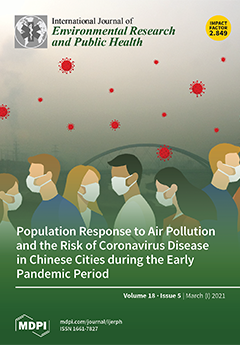Marathon running leaves a significant carbon footprint regarding CO
2 emissions; for example, 37 percent of New York Marathon participants travel internationally to New York. The aim of this study is to estimate the CO
2 footprint of a person training and competing
[...] Read more.
Marathon running leaves a significant carbon footprint regarding CO
2 emissions; for example, 37 percent of New York Marathon participants travel internationally to New York. The aim of this study is to estimate the CO
2 footprint of a person training and competing in a marathon; we will also propose methods to minimize the CO
2 footprint because of transportation. In addition, we also examine the influence of food practices and hygiene on training and racing a marathon. Methods: We estimated the annual carbon footprint of one person taking part in a marathon. We considered all training, racing, and travelling (local and international) for one person (we are going to give him the first name of “Henri”), and then compared his CO
2 footprint with his colleagues playing tennis and soccer. The excess CO
2 footprint whilst running and for shoes, clothing, books, magazines, insurance, travel, hygiene, laundry, and resources for electronics and additional food consumed were calculated. For competitions, we estimated and compared the CO
2 emission from transportation to national vs. international marathon (New York). Results: We estimated that our runner emitted 4.3 tons of CO
2 equivalent (CO
2e), including all greenhouse gases. A transatlantic flight to New York corresponded to 3.5 tons CO
2, which is 83% of the annual carbon footprint of an average French citizen which is about 11 tons CO
2e/year. This leads to a sudden 40% increase in Henri’s annual carbon footprint. Conclusions: By focusing on the additional carbon footprint from one year of marathon training and racing, and traveling locally versus internationally, this sport still has a potentially significant carbon footprint that runners and race organizers ought to consider. We wanted to answer a growing question of marathon runners who are wondering about the carbon footprint of their sports practice in following with a new environmentalist trend that considers not traveling anymore to participate in marathons and to stay local. However, the representativeness in the selection of calculation objectives is very low. There is no need for statistics since this study is a theoretical simulation of traditional training and competition practices of marathon runners.
Full article





